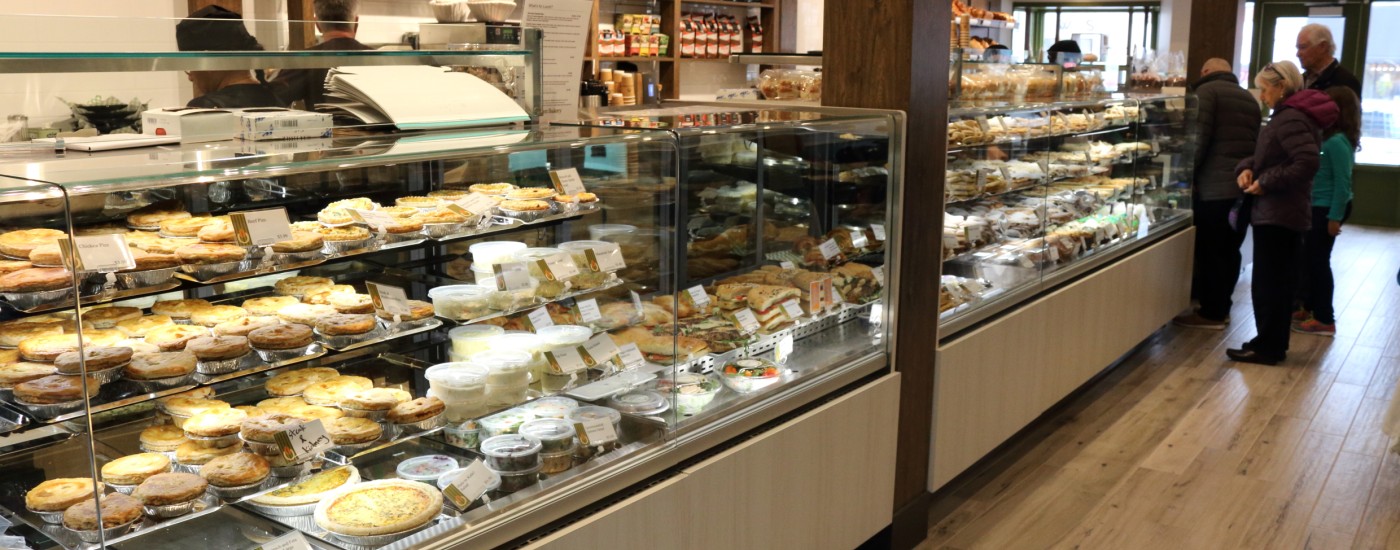The research and the data is clear: fresh food is what brings guests through food retailers’ doors. Whether it’s crisp produce, meat and fish that’s butchered onsite, farm-fresh dairy or the delicious smells of fresh baked goods, unprocessed, natural food items account for a substantial amount of a store’s revenue. It also drives store traffic and customer loyalty. Clearly, the demand for fresh food is real. With it, though, comes the need for retailers to manage their inventories by ordering (or making) the right amount.
Shrink is inevitable in the food business, but that doesn’t mean that the profit loss it causes can’t be minimized — and done without sacrificing availability. Below are some practical tips on how to reduce shrink and increase sales!
Display products correctly
Food display might not seem complex, but there’s a lot more to it than might appear at first glance. As with anything designed, there’s often more thought put into a creation than a user or consumer might realize, and food displays and shelving units are no exception. When it comes to reducing shrink, a basic, but crucial tip I have for retailers is: display your products correctly!
You need the right displays for the right products in the right section. The issue is that there are so many ways a product can be displayed. Certain foods might sell better if displayed in a designated area, or if they have their own display. Another option is blending alternative selections with common selections — allowing customers to come across an item they might not normally encounter. When dealing with perishable food items, they must be stored and displayed at the right temperature.
The work Cayuga did with Hot Oven Bakery, a bakery based out of Toronto, is an excellent example. Hot Oven worked with us to design custom millwork and displays for their high-quality bakery products. Together, we designed and implemented 32-inch deep jewellery-style dry and refrigerated cases. These cases ended up encouraging fast product turnover while dramatically reducing shrink, and reflected the chic, fashion-inspired look that Hot Oven was looking for.
Be cautious with new products
Start small. If you’re thinking of introducing a product that you haven’t sold in the past, order a small amount to see how it sells initially. This way, you’ll have an idea of how something will sell without risking heavy profit losses from shrink. Plus, a lot of suppliers have no issue selling a smaller amount of a particular product.
Less is more
The old adage "less is more" applies to food retail, too. Research shows that customers will buy more of a product if they have less choice. For example, if you displayed two types of pies on a table near the bakery, you could potentially sell more pies than if there are three or four types displayed! This also helps reduce shrink — fewer varieties means less potential for waste. My recommendation is to go with something tried and true, with maybe one or two unique varieties. This will prevent the customer from being overwhelmed.
When all else fails...
Occasionally, certain foods don’t sell as quickly as might be desired. If something isn’t selling as quickly as you’d like, consider putting out free samples for customers. New, unfamiliar products need to be introduced to customers somehow, especially if there’s a higher price point. I love to tell clients about the idea of "active" sampling — having employees walk around the store, asking customers to try a product while telling them about it. I believe that many food retailers would be surprised at the return on labour investment this can bring through increased sales. A tasty, no obligation sample can be all it takes to entice a customer into buying a product. If sampling isn't working, you can always reduce or markdown food prices.
I personally like to discuss “right-sizing” displays with Cayuga clients. For instance, we offer three depths of service cases, allowing customers to pick a case that gives them the right amount of holding power for their location and business. Many manufacturers offer only 42-inch depth cases, but we offer variable depths of 42-, 35-, and 32-inch. This way, clients can put less product in a case while still having it look full. I believe this is quite a practical way of addressing and reducing shrink by making a food merchandising display look good, full, promote product turnover (and therefore freshness) and ultimately reduce food waste.
Refrigeration of products also plays a role in reducing shrink. Cayuga has developed the innovative Cold and Slow™ technology, which uses high volume cooling (oversized refrigeration coils) alongside low-velocity air movement. This reduces the amount of product being dried out in a case and gives it a bit more shelf life — while promoting freshness.
At Cayuga, we have a lot of expertise in this area and can help you find the right food display for the right retail space. We offer different size shelving units as well as tables and displays, and are able to create custom units depending on a client’s needs.

